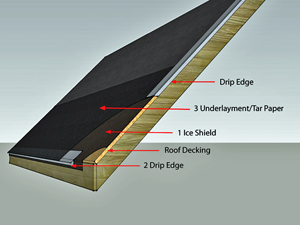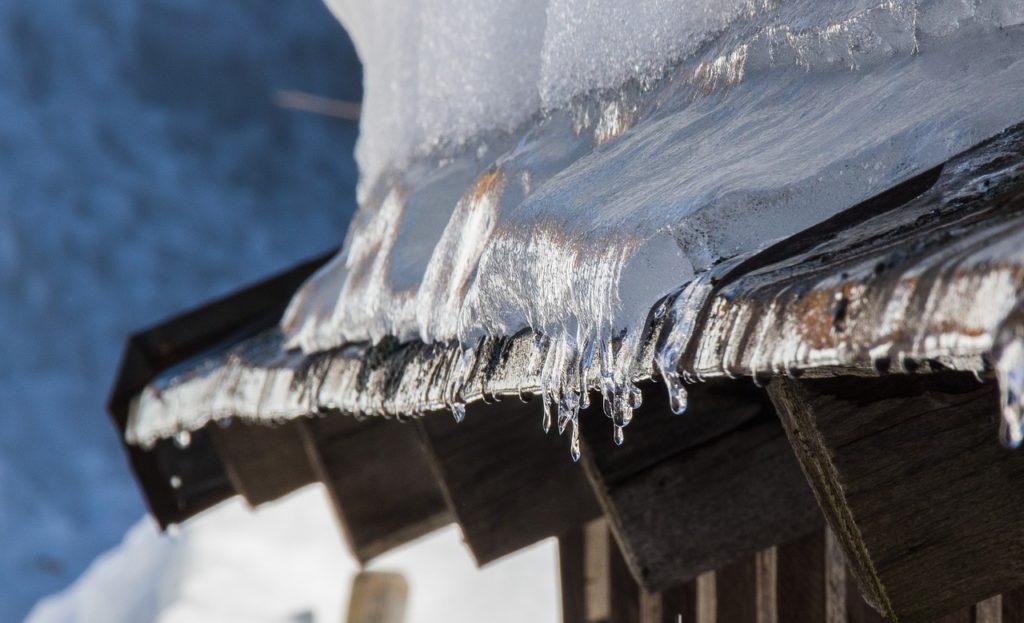
Plus, you’ll conserve energy and pay less for heating and cooling by preventing air leakage from lessening ice dams.
#Ice dams roofs skin
To minimize skin irritations brought on by insulation, always wear a long-sleeved shirt, dust mask, and long pants. It would be best if you did this in cooler weather otherwise, the heat in your attic would be intolerable. You must ascend to your attic, remove insulation by raking or pulling it back and seal any leaks with foam, caulk, or other materials. Some air leaks are challenging to locate due to low roof slopes. And the majority of the loss is due to air leaks brought on by unblocked walls, holes in the drywall, and cracks near light fixtures, access hatches, pipes, chimneys, and other ceiling penetrations. Follow these three ways to keep your roof cold: Close up Attic BypassesĪbout one-third of the heat loss in a standard house is via the ceiling, which travels into the attic. However, a warmer roof will soon have clear areas where the snow has melted off, and it might even have icicles hanging from the eaves. A frigid top will have a heavy layer of snow covering it after a snowstorm.

The only thing you need to do to avoid ice dams is to keep your attic and roof cold.
#Ice dams roofs professional
It might even cause rot or mold eventually, you will need to hire a home inspector in Los Angeles, CA, to have a professional view.
#Ice dams roofs windows
Additionally, you might see stains near windows and doors, sagging sheetrock, or peeling paint. The first sign of ice dams may be rust marks on drywall fasteners.

The accumulated water finds its way back beneath the shingles because it has nowhere else to go. Your roof eventually develops leaks as a result of the water seeping into the soffits, walls, and ceilings. If this rim thickens and begins to hold additional water behind it, an ice dam will eventually form. It freezes when the roof’s melting snow contacts the frigid edge that the attic hasn’t warmed. Snow melts over the heated roof area even though the outside temperature is below freezing. The attic in most houses loses heat through the ceilings, warming the wood and shingles directly above it. A heated attic is frequently to blame for this situation. This only happens when the edge of your roof is below freezing, and a portion of it gets to over 32 degrees F, which is warm enough to melt the snow. Ice dams form when the snow melts, runs down your roof and then refreezes close to the edge.

At the same time, you can also follow the tips discussed in this article for preventing ice dams on your roof. Of course, Los Angeles home inspections can give you a better picture of this issue. Fortunately, some tips and ways can help you prevent ice dams on your roof. We all know that spring storms are notorious for damaging roofs, but winters can also be hard on the roof. During wintry days, ice dams are one of the major concerns you should look out for.


 0 kommentar(er)
0 kommentar(er)
